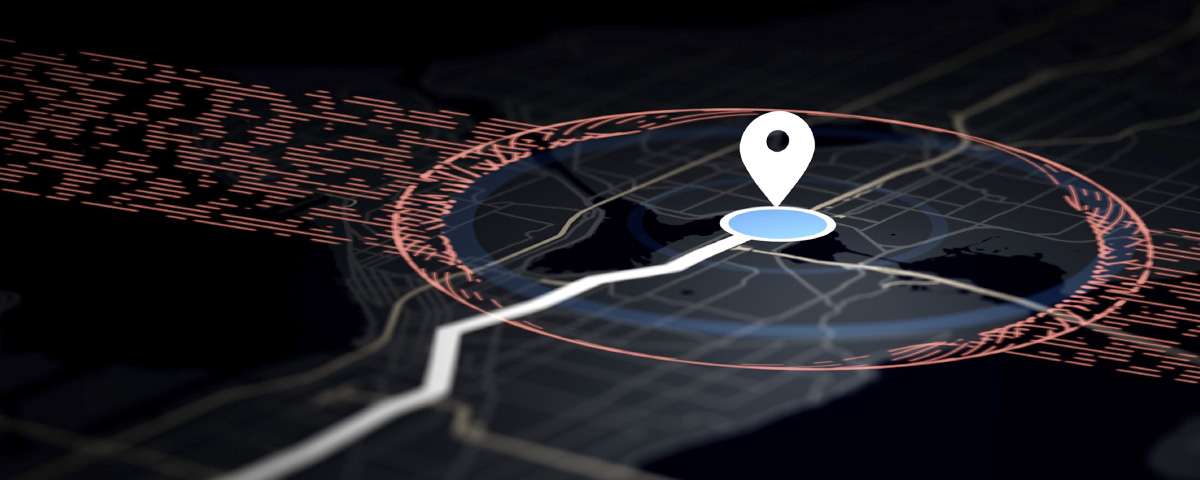The world has changed dramatically over the last couple of years, but even before the pandemic, consumers lived in a fast-paced environment full of choices between competing brands and ever-evolving technologies. In today’s world, customer expectations are high, and they expect excellent customer service that is both hassle-free and highly personalised. Critical to providing excellent customer service is the concept of a completely frictionless customer experience; one that is as seamless, efficient, helpful, enjoyable, and as stress-free as possible.
The idea of a frictionless customer experience is something every business needs to nail. It’s what drives customers to become loyal and encourages them to refer products or services to others. Here’s how your business can achieve a first-rate, frictionless customer experience.
Customer friction – what is it?
Just like the friction we experience in our everyday lives, like struggling to pull up a pair of snug jeans or shifting heavy furniture across the floor, a customer experience can sometimes include several sticking points which create resistance and prevents a customer from making a buying decision. ‘Friction’ can include long wait times or high shipping costs, rude customer service, botched orders, and poor experiences on the phone trying to get the right help. While customers never want their experience to be complicated, confusing, or frustrating, it’s also important for every brand to appreciate that today’s consumers have been conditioned by some of the biggest tech-driven brands that have mastered how to create exceptional customer experiences as well as deliver at speed.
Why it’s important to create a frictionless customer experience
A frictionless customer experience means creating a seamless process, whether that’s to do with buying, signing up, or getting help from customer service. It’s about finding those areas of friction along the entire consumer journey and finding ways to get rid of them. With customers willing to pay more for quality service, prioritising a frictionless customer experience in every aspect of your business really is a no brainer. A great example of a company that has succeeded in thinking outside the box to create a frictionless customer experience is Amazon. The global company has a chain of brick-and-mortar stores where the world’s most advanced shopping technology is used to ensure no queue wait time to see a cashier, transforming the traditional retail experience.
What can cause customer friction?
According to customer service and experience expert Shep Hyken, customers demand a level of attention from you that may not reflect the service and experience you offer. He states that seven primary categories commonly cause friction for customers, sharing his insights in a Forbes article in 2019, just before the pandemic. Nonetheless, with the categories appearing to be even more relevant in a changed world, here are the things that commonly cause friction for customers according to Hyken:
- Duration: This refers to the customer being on hold for an extended period. To them, it’s a waste of time and quite frustrating.
- Identity: A company should already know who the customer is (to a certain extent) and should avoid having to repeatedly ask the customer to share different pieces of personal information.
- Memory: When transferred between people or departments, customers should not repeat themselves. Should they have to start over if the customer calls back about an issue from a previous call?
- Consistency: If a customer calls back, will they receive a different answer? This can cause confusion and mistrust in your service or product.
- Visibility: Can the customer see where they are in the process? Are they able to see progress reports on topics such as shipping or troubleshooting?
- Empowerment: Is there a way that a customer can take control of the situation? For instance, are there self-service tools for them to use that are easy and intuitive?
- Proactiveness: This refers to companies being one step ahead: having the ability to know, understand and resolve their customer's issues without them having to exert much effort.
Other causes for friction to look out for are lengthy login processes, confusing navigation over the phone or online, unresponsive websites, lack of personalisation, disorganisation, unfriendly employees, not enough automation, and unresolved issues. These are all nuances that make your customer feel friction and can cause a loss of loyalty.
So how do you create a frictionless customer experience?
We’ve talked a lot about customer friction and how it’s caused, so when assessing your business operation, you should already know the warning signs. The next step is to understand how to create a frictionless customer experience. Due to intuitive technology systems, the great thing is that it is now easier than ever to get to know and understand your customers, learn their preferences, and fine-tune how to always give them the outcome they’re looking for. For example, AI-powered software such as Oration by Convai allows for the intelligent and accurate routing of calls, CRM integration, data analytics and reporting for better customer understanding, self-service, and digital channel shift. All these features can result in shorter wait times, faster resolutions and improved customer satisfaction, and greater overall efficiency for call centre operations.
Here are some top tips for how to create a frictionless customer experience:
Identify your contact touchpoints
Spend time taking a thorough look at your business, especially its customer contact touchpoints throughout a purchasing or signup journey. Customers may find your business through various avenues including in-store, visiting your website, seeing an ad, or reviews online. Touchpoints are anywhere a customer comes into contact with your business. Below are some examples of touchpoints, and therefore a great place to start understanding how your customer experiences different interactions:
- Customer service agents and call centers
- Live Chat function
- Contact page / email assistance
- The contact form on your website
- Newsletter subscription / sign up button
- Free product demo
- The Comments section on your website or social media post
- Your social media pages
- Blog posts and articles on your website, LinkedIn, or elsewhere
- Surveys
- Client testimonials
- Marketing emails.
Make a long list of every customer touchpoint and note down the point in the consumer journey where the customer comes into contact with your business. Is it before, during, or after they purchase or sign up? During every contact with your company, the aim is to engage, support, and convert. There may be parts of your service offering that don’t work as well as others; therefore, consistency needs to be enforced.
Understand your touchpoints
Once you know your customer touchpoints, you need to spend time getting to know how your customers experience them. Look out for things such as:- Do all of your touchpoints have a purpose? I.e. do they all lead somewhere that is helpful? If they are redundant, that’s an easy one to get rid of right from the start (unless you make a plan to transform and ensure the touchpoint is relevant and useable)
- On average, how long is a customer waiting in a queue – either for a call centre, live chats, or chatbots?
- When contacting your call centre, are customers directed to the correct place or outcome? And how long do they wait?
- Is there personalisation when a customer calls, i.e. do you have their preferences recorded?
- How many steps are there in the consumer process, from start to finish?
- Are your branding and essential messaging consistent across all touchpoints?
- How accessible are your touchpoints? For example, is it easy to find your ‘Contact Us’ page and do you have a number in your email signature? How many steps does it then take for the customer to reach you?
- How easy is it to navigate your website or platform?
- Have you provided as much information as possible on your website?
- Is it easy for your customers to follow through if you have a call to action? Or does it get complicated?
- Do you effectively store customer’s data for retargeting and personalisation?
- If you have a bricks-and-mortar store, are there systems in place to ensure queue time is as minimal as possible?
- How proactive is your business in recognising a concern before it arises?
It’s time to make a plan and take action
You’ve spent time assessing your touchpoints and understanding the customer journey. Now it’s time to make a plan. The aim here is to reduce pain points and turn the exchange between business and customer into a frictionless customer experience.
If we take the example of customer service, a great way to reduce frustration and friction is to offer more ways to contact. Think of various customer audiences and their needs: for instance, an older person may struggle with Live Chat and may prefer to speak to an agent on the phone. Conversely, a younger person may find Live Chat the best method for them as they can get to the bottom of their issue while focusing on multiple other browsers on their computer. If you only offer a phone option, this will deter those that don’t like to speak on the phone. Your number one aim is to ensure your customer is not already frustrated when they talk to an agent.
If a customer has to relay their details multiple times to various agents, this can get hugely frustrating. Intelligent and intuitive call routing technologies can allow customers to be routed to the right agent right from the start. What’s more, they can also enable agents to quickly and easily access the customer’s previous history, preferences, and call records to help them resolve issues faster. The journey between agents (should the customer need to be passed along) or to alternative channels should always be seamless (and for good reason) such as when a customer needs help with multiple queries.
Spend time engaging with what’s going on, on the floor. If you spot some friction in a particular area, assess if the agents are effectively communicating with each other (if not, this may affect productivity levels), and adequately trained in the areas they are providing help. Intuitive call software can allow you to listen to recorded messages for quality control and change how different call types are routed to expert agents. Remember: the customer is only ever as happy as the agent they are speaking to!
Looking toward a frictionless customer experience future
We all know what it’s like to enjoy and value excellent customer service. To drive loyalty and repeat business, businesses must keep up with the ever-evolving technological landscape, be ahead of their competitors, and most importantly, listen to what their customers need and want – because there’s nothing more important for success than an excellent, frictionless customer experience.
Oration’s intuitive and straightforward Graphical User Interface Dashboard allows contact centres to build and manage different customer journeys and generate insightful reports on the entire call routing solution. Through the UI, call flows are easy to view and manage in real-time, so contact centre managers can set the context and intent of individual calls and design the right outcome for every type of interaction.





